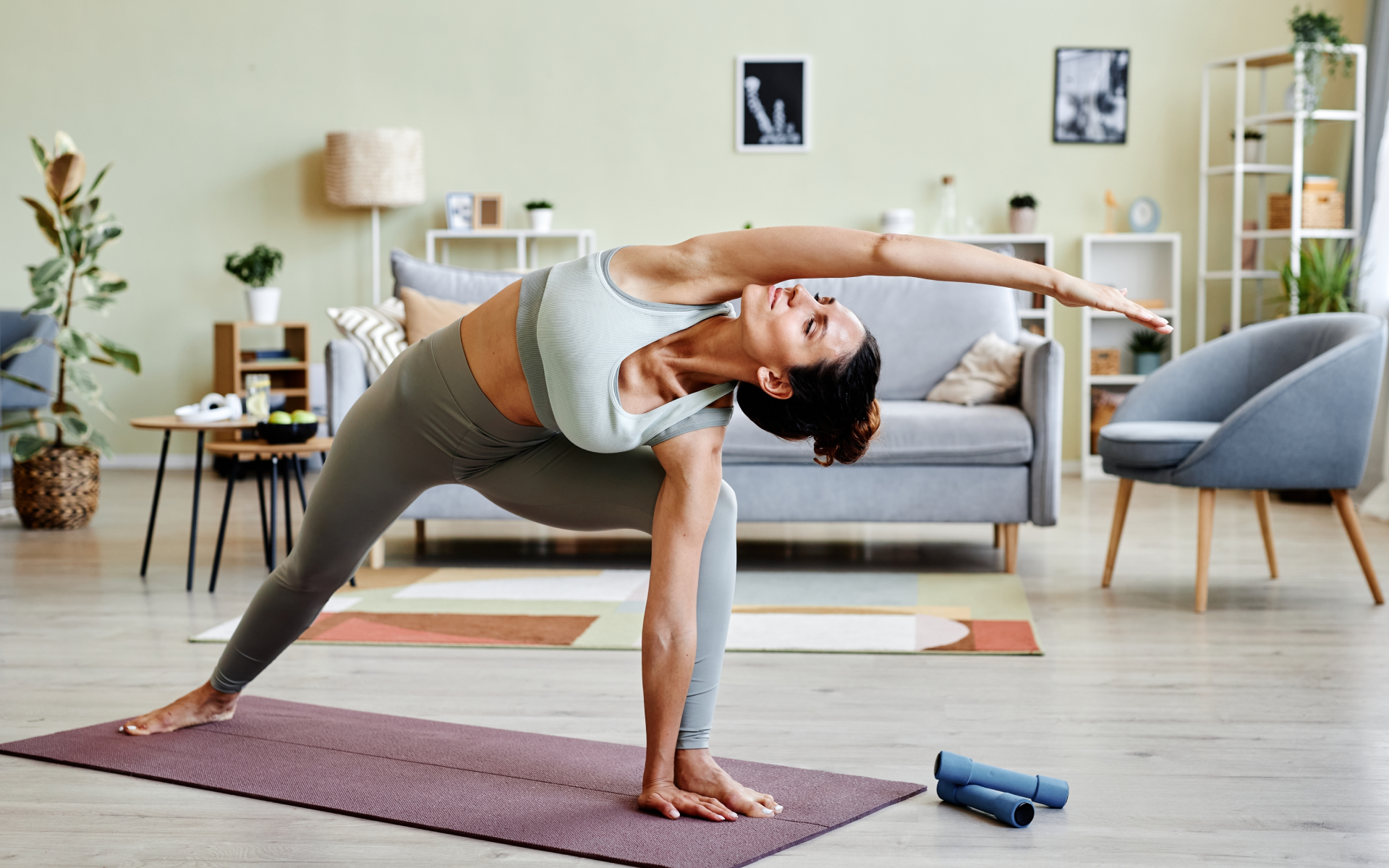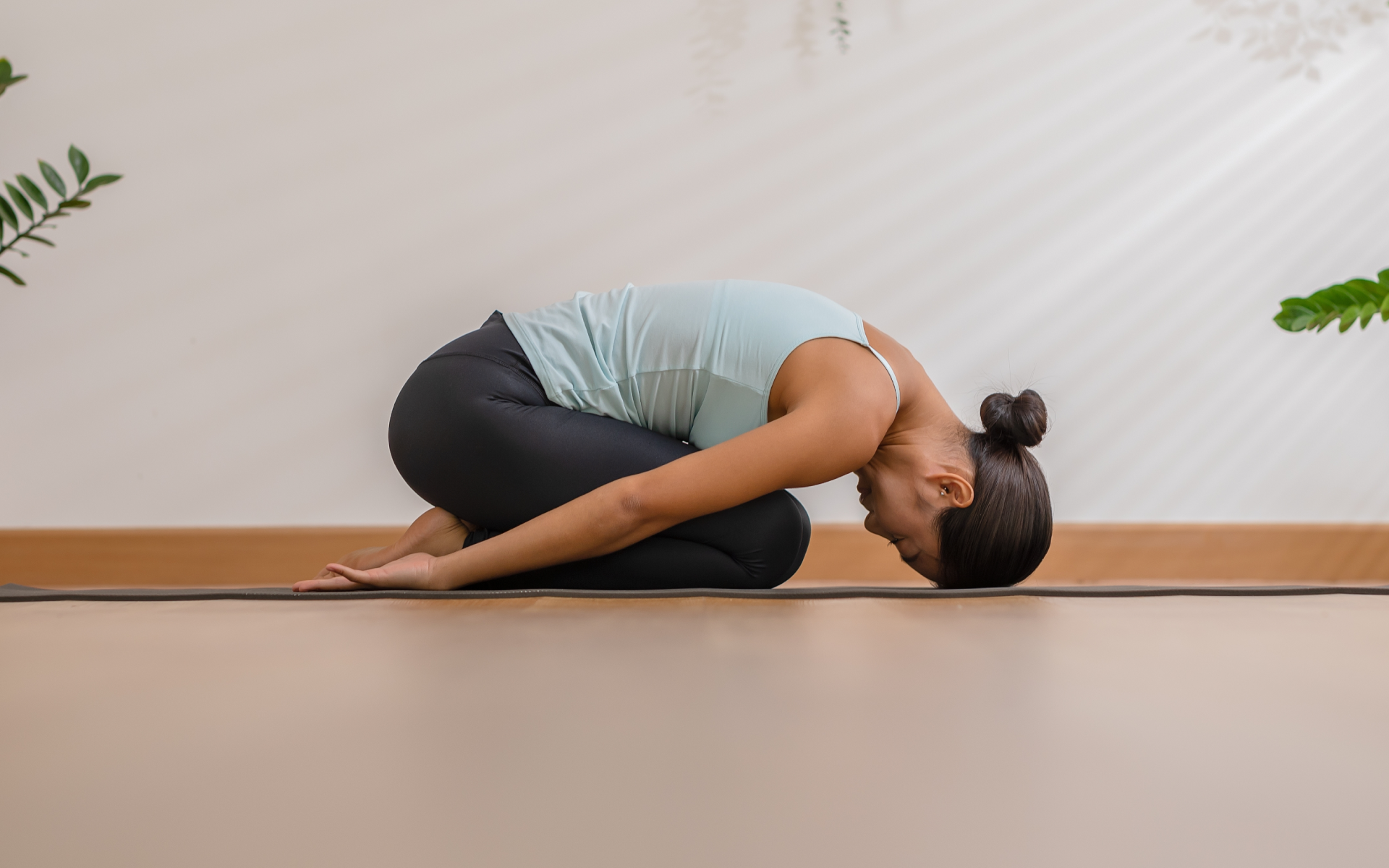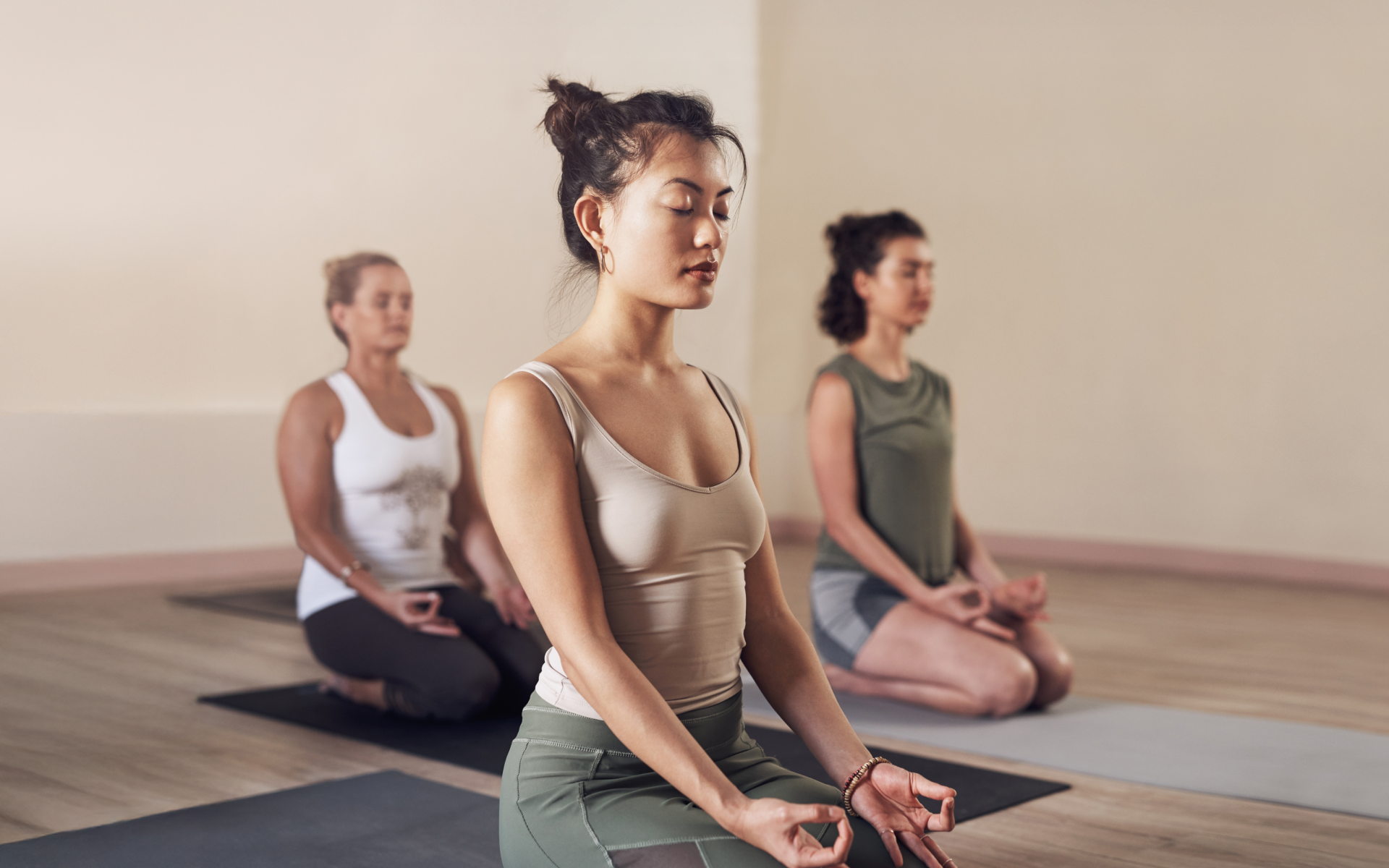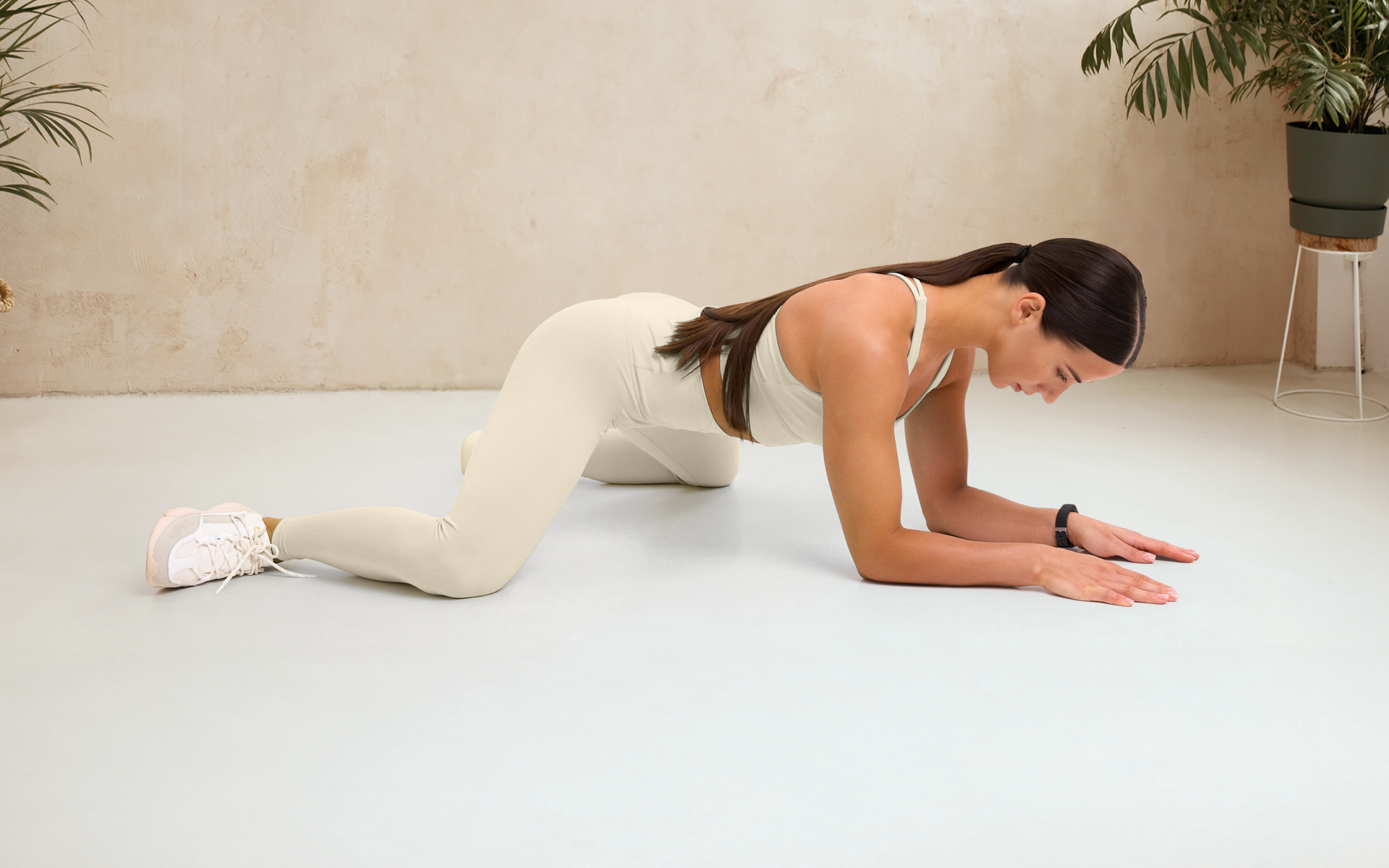There are a variety of exercises that are considered somatic and have a multitude of both mental and physical health benefits. The fact that there are many different types of somatic exercises means that coming up with a somatic exercise plan that suits your preferences and needs is quite easy. Various stretches and yoga and dance moves can be incorporated into your somatic exercise plan.
What Is the Best Somatic Exercise Plan?
What is the best somatic exercise plan for one person may not be the best for another. Generally, the best somatic exercise plan consists of movements that are gentle and encourage the release of tension and often emotions too. The best somatic exercise plan should start slow and give you time to ease into the movements and feelings you may experience.
Before you get started, you should consider what your intent is, in addition to your physical capabilities. Some somatic exercises are done with the purpose of improving body awareness while others may focus more on tension release or improving mobility. Your intent and general goals should help you to determine the type of exercises you want to include in your exercise routine.
5-Step Somatic Exercise Plan for Every Day
Step 1: Warm-Up
Start your somatic exercise routine by improving your awareness. This can be done by completing a simple body scan and engaging in breathwork. To do this, start by sitting or lying in a position you find comfortable.
With your eyes closed, take a moment to mentally complete a body scan. Start the scan at your head and slowly move down to your toes. During the body scan, make sure to mentally note any feelings of discomfort or tension that you notice in your body.
Once you’ve completed this, you should further connect with your body by taking some slow, deep breaths. Notice the way your body moves with each inhale and exhale and allow any tension you feel in your neck and shoulders to be released as you release your breath.
Step 2: Release Movements
One of the great things about somatic exercise is you can ease into it. Movements such as the pelvic tilt, shoulder shrugs, and neck rolls allow you to release tension in large areas of your body before truly diving into the more challenging movements.
Pelvic Tilts: To complete pelvic tilts, you’ll start by lying on your back on a flat surface. Bend your knees while keeping your feet flat on the ground. Next, rock your pelvis forward and then backward. Don’t force the movement, but explore the limits of your body and see how the movement feels and how your body responds to it. Complete the back-and-forth pelvic movement 5-10 times before moving on to the next exercise.
Shoulder Shrugs: These are easy to complete and can be done in almost any environment. Ideally, you’ll be in a seated position sitting upright. Start by lifting your shoulders up toward your ears and then letting them fall back down. Repeat this 5-10 times and recognize how your body feels before, during, and after. It’s helpful to breathe in when lifting your shoulders up and out when letting them fall.
Neck Rolls and Head Nods: Yes, this is as simple as it sounds. However, just because it’s a simple movement doesn’t mean it isn’t beneficial. Start with your head in the upright position and facing forward. Gently tilt your head to the right, then slowly roll your head (with your chin tucked down) forward, then to the left side, backward, and ending where you started. Repeat this chain of movement in the opposite direction and perform the entire sequence at least 3 times.
Once you’ve completed the neck rolls, try also doing some head nods. This is as simple as it sounds. Simply and slowly nod your head up and down and side to side. You can also try moving your nose in circles as if tracing a circle that has been drawn in the air with your nose. Start with small circles and then bigger ones. Repeat in both directions multiple times.
If you notice the feeling of something ‘sticking’ at any point in time during these movements, try holding in the position in which you feel the sticking occur but make sure not to force your body to move beyond what is comfortable.
If you wish to reach into the deep crevices of your mind, take yourself out of the mental loop, regain balance, infuse yourself with optimism, and cultivate compassion – BetterMe: Meditation & Sleep app is exactly what you need!
Step 3: Feldenkrais Exercises
Cat-Cow Pose: Start out on your hands and knees so your back is flat like a table. Next, alternate between arching your back and then rounding your back. Do this 5 times while moving slowly and focusing on your breathing.
Spinal Rolls: Stand with your feet beneath your hips and slowly bend over toward the floor. Focus on the bending of each vertebra and the stretching of the back. Once your hands reach the floor, you’ll reverse the movement and slowly move back into a standing position. Take notice of any tension you feel in your back and neck and breathe deeply and steadily. 
Step 4: Balance and Coordination
Walking Meditation: Walking with purpose is a great way to work on your balance and coordination. For this movement, you’ll focus on walking in a straight line. When you’re walking, you should focus on how it feels when each foot makes contact with the ground. Notice how it feels to lift your foot and move it into a new position, in addition to how the change in weight and balance feels. You can do this back and forth across a room about 5 times.
Arm Circles: You can do this somatic exercise in either a standing or sitting position. Put your arms straight out from your sides and start by moving them in a slow and steady circular motion. As you continue, increase the size of the circular motion you’re making. During this exercise, you should focus on the feeling in your shoulders and neck.
Step 5: Cool Down
Savasana (Corpse Pose): Now this is the very easy part. Finish up this somatic exercise plan by lying flat on your back with your arms and legs extended straight out. Allow the heaviness of your body to settle into the surface you’re on and take nice deep breaths in and out. Recognize your body becoming lighter.
Seated Meditation: You can also end with seated meditation either as an alternative or in addition to the Savanasa. For this exercise, you’ll put yourself into a comfortable seated position and take a moment to focus on your breathing. You can also repeat a mantra in your head, which can help to further connect your mind and body as a part of this somatic exercise plan.
How Do I Start Somatic Exercise?
When starting somatic exercise you should first take some time to educate yourself about it. This could include watching videos of somatic exercises and reading information about them. There’s a lot to know about somatic exercise and while there are many physical and mental health benefits to incorporating it into your routine, you may also need to prepare yourself for things such as deep emotional releases – somatic exercise sometimes triggers the release of both physical and emotional trauma and can cause unexpected reactions (1).
Once you’ve developed a decent understanding of the purpose of somatic exercises and what you may expect when doing them, you can get started by attending an in-person or virtual class. When you’re getting started, it’s helpful to have some guidance so you can learn how to do the movements in a way that gives you the most benefits. Using the BetterMe Health Coaching App is a great option for starting your somatic exercise journey.
What Does a Somatic Session Look Like?
Somatic sessions can look very different from one person and program to the next as the purpose of them is to focus on yourself and your mental and physical needs. Typically, somatic sessions don’t require any exercise equipment and are ideally done in a safe and quiet environment.
Somatic sessions tend to encourage moving slowly and gradually from one exercise or pose into the next. During the session, you’re meant to pay close attention to the sensations in your body and allow releases as you move. You can make the sessions as short or as long as you wish; it’s all dependent on your individual needs and comfort level.
Read more: Somatic Healing Techniques: A Holistic Approach to Physical and Emotional Recovery
Benefits of Regular Somatic Exercises
Doing somatic exercises regularly can help you become more in touch with yourself. They encourage self-exploration, body awareness, and emotional release. If you’ve been holding onto trauma within your body, you may notice that you start to feel tension release over time and it’s possible that you may start to cope with emotions you weren’t aware of. Releasing both physical and mental tension can significantly improve your physical and mental health and your day-to-day well-being (2).
How Many Times a Day Should You Do Somatic Exercises?
How many times a day you do somatic exercise will depend on your goals and availability. If you’re hoping to use somatic exercises to cope with stress and help you relax, then 1 or 2 times a day would be plenty. This could be two 5-minute sessions, perhaps one when you wake up and one before you go to bed or during your lunch break (3).
If you’re more focused on treating chronic pain, tension, or an injury, then it would be most beneficial if you did somatic exercises 2 or 3 times a day, or whatever is recommended by a qualified professional.
If your main focus is to improve your body awareness, flexibility, and balance, then it would be beneficial to do a longer session just once a day. Doing a 20-minute somatic session each day is a great way to improve and maintain the way your body moves and functions. 
Can You Lose Weight with Somatic Exercises?
Generally, somatic exercise doesn’t help you burn a large number of calories, but it does encourage you to move your body and can help reduce stress. Having a body that’s able to move comfortably and a mind that’s at ease is a great start to increasing activity levels and decreasing binge eating episodes, which may result in weight loss.
If you’ve dipped your toes in meditation before but couldn’t sit through a session because of all the thoughts buzzing in your head, impulses snatching away control or all the overwhelming feelings that start bubbling up the minute you sink into the silence, it’s only because you didn’t have the right guidance. Start using BetterMe: Meditation & Sleep app and watch your life transform!
FAQs
Is a somatic workout just yoga?
No. There are various types of somatic workouts. Yoga is a type of somatic workout, but there are also dance and tai chi workouts. There are also different styles of movements that are considered somatic workouts, but they aren’t as well known, including the Feldenkrais method and Alexander Technique.
Is walking a somatic exercise?
Yes, walking can be a somatic exercise if you place a specific focus on the way you move when you’re walking. If you focus on how your weight shifts and how your feet feel as they make contact with the ground, this can help improve body awareness and balance.
What is the difference between somatic exercise and stretching?
There are some similarities and differences, but ultimately, it’s the purpose of the movement that makes the two different. Somatic stretching is intended to improve flexibility and lengthen muscles, while somatic exercise is more focused on increasing flexibility and range of motion and typically targets a group of muscles rather than individual ones.
Somatic Exercise Plan: The Bottom Line
Somatic exercise plans can vary greatly from one person to another, but importance should always be placed on the mind-body connection, releasing tension, and things such as mobility and body awareness. How often you incorporate your somatic exercise plan into your routine and how long it is should be dependent on your goals and the focus of utilizing the plan. You can easily find an exercise plan online or from an app, but you’ll gain the most from a plan that allows some personalization so you can tailor it to your needs.
DISCLAIMER:
This article is intended for general informational purposes only and does not serve to address individual circumstances. It is not a substitute for professional advice or help and should not be relied on for making any kind of decision-making. Any action taken as a direct or indirect result of the information in this article is entirely at your own risk and is your sole responsibility.
BetterMe, its content staff, and its medical advisors accept no responsibility for inaccuracies, errors, misstatements, inconsistencies, or omissions and specifically disclaim any liability, loss or risk, personal, professional or otherwise, which may be incurred as a consequence, directly or indirectly, of the use and/or application of any content.
You should always seek the advice of your physician or other qualified health provider with any questions you may have regarding a medical condition or your specific situation. Never disregard professional medical advice or delay seeking it because of BetterMe content. If you suspect or think you may have a medical emergency, call your doctor.
SOURCES
- Levine, P. (2012). Somatic experiencing.
- Guðnadóttir, S. L. (2024). Comfort in discomfort: The role of Somatic Practices in dance as a means to release trauma from the body (Doctoral dissertation).
- Paull, K. A. (2022). The Stressed-Out College Student and the Mood-Boosting Effects of Somatic Dance (Doctoral dissertation, University Honors College, Middle Tennessee State University).







